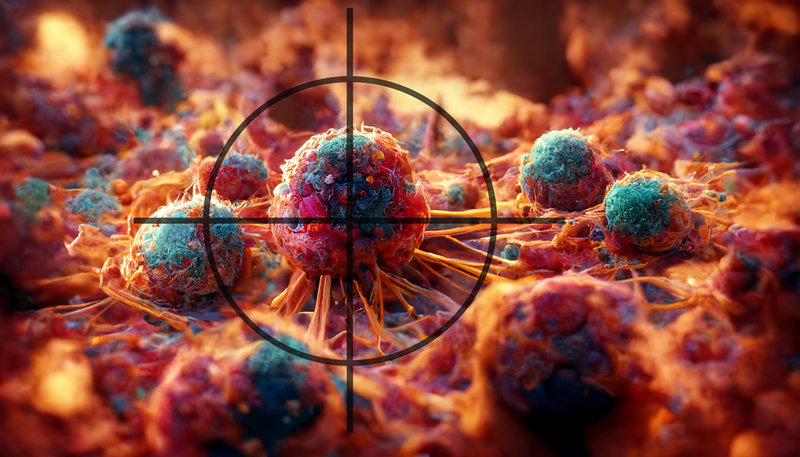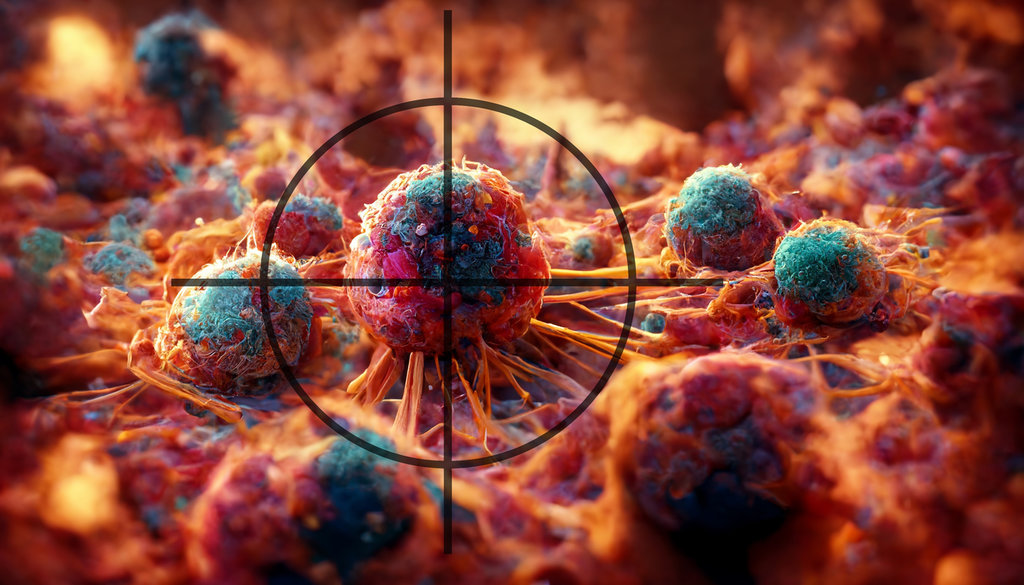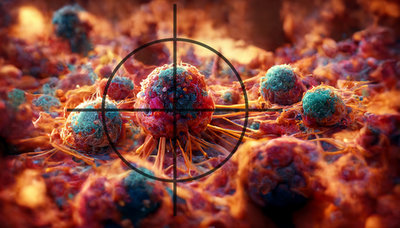Cover Story
Skin in the game – the next-gen skin cancer screening device
Squaremind unveils a digital solution combining robotics, artificial intelligence and computer vision designed to automate and enhance early skin cancer detection. The product is set to be launched in Europe this year. By Bernard Banga.

Credit: Shutterstock/Aunt Spray
According to the World Health Organization (WHO), skin cancer is the most prevalent cancer globally, with over 3 million new cases diagnosed each year. France’s National Cancer Institute reports a greater than 3-fold increase in new cases of skin cancer over the past 30 years, citing sun exposure and population ageing as the primary drivers, with climate change clearly set to exacerbate this trend.
Challenges for early detection using dermoscopy
The deadliest form of skin cancer, melanoma, accounts for approximately 132,000 new cases and 60,000 deaths around the world each year. Most skin cancers, however, have a good prognosis, with high long-term survival rates if they are properly managed.
According to oncologists at the Hartmann Institute of Radiotherapy and Radiosurgery in Levallois-Perret, France, basal cell carcinomas have nearly 100% five-year survival rates, while melanoma hovers around 90%. This explains the importance of non-invasive early detection, which at present primarily involves clinical skin examination by dermatologists and the use of skin imaging instruments such as dermatoscopes. If cancer is suspected, an invasive biopsy can be performed to excise and analyse the affected tissue to confirm malignancy. However, ‘early detection via dermoscopy is time-consuming and labour-intensive, remaining susceptible to human error and manual intervention, which limit its accuracy and accessibility. Regular monitoring of high-risk patients also proves challenging with current methods, explains Ali Khachlouf, co-founder and CEO of Squaremind.
The transformative power of robotics, AI and computer vision
Engineers Ali Khachlouf and Tanguy Serrat, co-founders of Squaremind, have developed a game-changing concept: combining robotics, artificial intelligence (AI) and cutting-edge computer vision to create a robotic device and web platform for AI-assisted diagnostics. Their mission is to revolutionise skin cancer detection by enabling faster, more comprehensive and accurate scanning of the skin to identify malignant lesions. ‘The dermatoscope, a magnifying glass invented 30 years ago, remains the latest disruptive innovation in skin cancer screening. Our solution aims to streamline patient monitoring, vastly improving access to early detection, and to bring digitisation to this area’, says Khachlouf. The Squaremind team will be unveiling their technology at the Viva Technology 2024 expo in Paris in late May.
Established in 2019, Paris-based Squaremind SAS is focusing its mission on revolutionising healthcare, aiming to save lives and alleviate the strain on medical professionals using groundbreaking software technologies. Over the past 5 years, its team of 11 software engineers and scientists has been working to develop its 3D reconstruction software and robotics for comprehensive body mapping to combat skin cancer.
Squaremind has received support from a number of major investors, including the French public sector investment bank BPIFrance SA; the European Commission, through the European Innovation Council (EIC) Accelerator programme; and the leading European early-stage health technology venture firms Calm/Storm Ventures GmbH (Vienna, Austria), Entrepreneur First Operations Ltd (London, UK) and id4 Ventures Ltd (Nicosia, Cyprus).
‘Our solution has been meticulously designed in collaboration with dermatology teams across France, Europe and the United States. Their invaluable feedback has played a pivotal role in shaping the solution we are developing for healthcare professionals’, explains Tanguy Serrat, co-founder and CTO of Squaremind.
Autonomous body navigation using advanced 3D software
Squaremind’s technology comprises 3 key elements: a whole-body imaging dermoscopy device, AI-powered hosting and a web-based physician support application. The whole-body imaging device consists of an arm equipped with a high-resolution camera that navigates around the patient to generate high-resolution, reproducible skin images in just 5 minutes. This robotic visualisation system produces a detailed skin map, zoomable to a dermoscopic scale. Integrated AI helps dermatologists detect changes between visits, and any potentially problematic lesions shown on the images. Using a web application, dermatologists can review the patient’s skin map and automate image storage. The support software seamlessly integrates into the dermatologist’s workflow, facilitating rapid identification of potentially problematic skin changes.
‘Using our 3D reconstruction software, which enables an off-the-shelf robot to autonomously navigate around any body in real-time, we can finally capture the data that doctors and algorithms currently need for skin screening and to unlock productivity’, concludes Serrat.
Improving sensitivity and workflow efficiency
This unique blend of whole-body imaging and dermoscopy represents a significant leap forward from existing solutions. By automating skin image acquisition, this system enables highly precise dermatological monitoring with enhanced diagnostic sensitivity, ranging from 10 to 30%. It also streamlines the dermatologist’s workload by freeing them up from manual image acquisition and recording, and making it much easier to compare patient images over time.
These ergonomic advantages and workflow improvements are particularly vital given the scarcity of specialists in both Europe and the US. Certain parts of Europe have fewer than 5 dermatologists per 100,000 inhabitants, and the Association of American Medical Colleges (AAMC) is projecting a shortage of 13,000 dermatologists in the US by 2034.
‘Since January 2024, there has been a surge of interest in our solution on both sides of the Atlantic. Our whole-body imaging innovation meets a genuine need among healthcare professionals looking to integrate it into their clinical practice. Several US centres of expertise have expressed keen interest in deploying the solution upon its availability in the American market’, explains Khachlouf, who plans to bring the technology to market in Europe later this year. ‘The technology facilitates patient monitoring over time and improves access to medical data’, he adds.
Squaremind targets $5.5B global skin cancer screening market
Squaremind has its sights set on the global skin cancer screening market, which is worth $5.5 billion this year, according to The Insight Partners SAS. The competition in this space is fierce, with half a dozen players offering advanced AI-assisted dermatoscopes. They include Fotofinder Systems GmbH (Bad Birnbach, Germany), Molemap Limited (Auckland, New Zealand), Scibase AB (Stockholm, Sweden), Dermasensor Inc. (Miami, Florida, USA) and Veriskin Inc. (San Diego, California, USA). These companies are combining dermoscopic imaging technologies with AI algorithms to help dermatologists identify melanomas and other suspicious skin lesions.

Caption: The US Pentagon is seeking to reduce carbon emissions through a range of programmes, but will it go far enough? Credit: US DoD
Australia could be one of the main beneficiaries of this dramatic increase in demand, where private companies and local governments alike are eager to expand the country’s nascent rare earths production. In 2021, Australia produced the fourth-most rare earths in the world. It’s total annual production of 19,958 tonnes remains significantly less than the mammoth 152,407 tonnes produced by China, but a dramatic improvement over the 1,995 tonnes produced domestically in 2011.
The dominance of China in the rare earths space has also encouraged other countries, notably the US, to look further afield for rare earth deposits to diversify their supply of the increasingly vital minerals. With the US eager to ringfence rare earth production within its allies as part of the Inflation Reduction Act, including potentially allowing the Department of Defense to invest in Australian rare earths, there could be an unexpected windfall for Australian rare earths producers.
The mine’s concentrator can produce around 240,000 tonnes of ore, including around 26,500 tonnes of rare earth oxides.
Gavin John Lockyer, CEO of Arafura Resources
Total annual production

$345m: Lynas Rare Earth's planned investment into Mount Weld.

Caption. Credit:

Phillip Day. Credit: Scotgold Resources